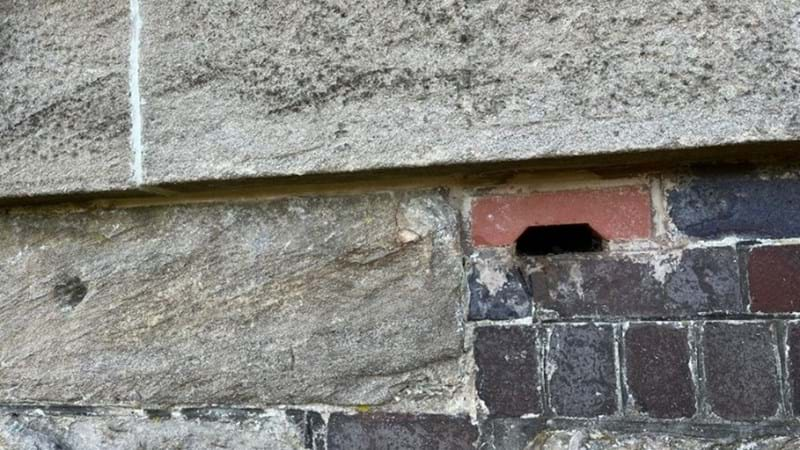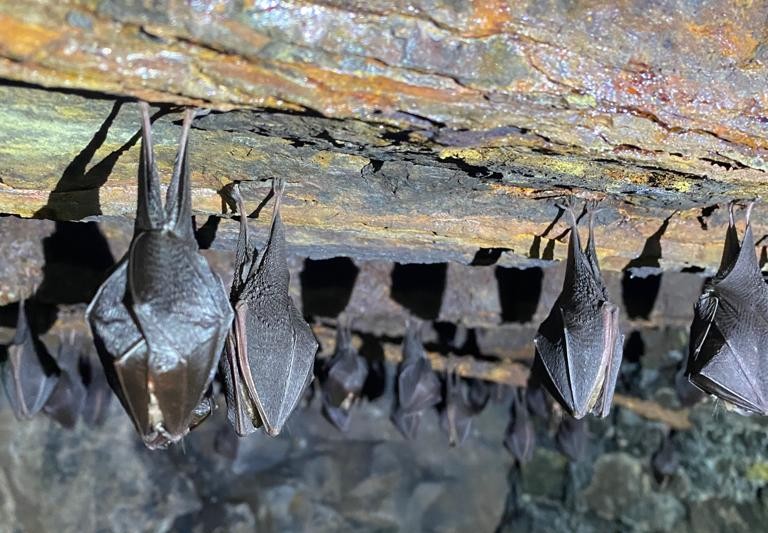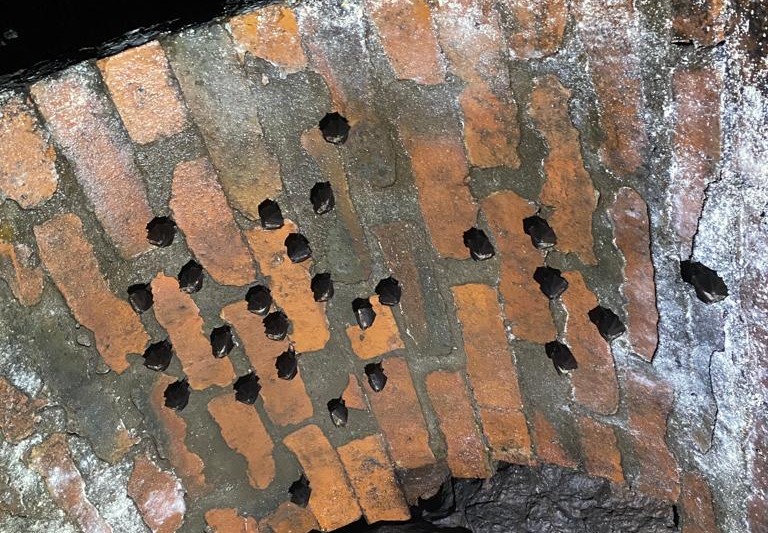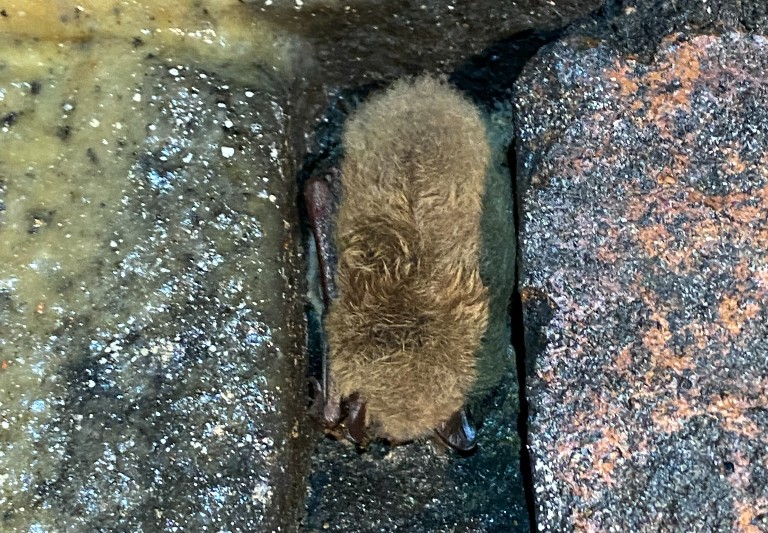New data shows bat populations thriving on Historical Railway Estate
Published
31 Oct 2023
Hanging around in the shadowy underbelly of Victorian bridges, swarming through dark, locked up tunnels and diving into the recesses of historic viaducts a secret invasion is under way – and it's good news for the nation’s bat population!

Share this article
Data released for Halloween by our Historical Railways Estate (HRE) suggest that bats are roosting in 90 percent of our tunnels, 54 percent of viaducts and 35 percent of bridges.
An ongoing programme of HRE bat surveys throughout 2023 could show even more bat activity across the 3,100 disused railway structures and assets we look after.
(Watch footage of a 169-strong roost of rare lesser horseshoe bats we discovered during a survey of a South Wales tunnel this year. The exact location is not revealed to protect the bats from disturbance.)
Nearly 500 surveys have been carried out already since January in England, Scotland and Wales and many more are to follow before 2024.
Head of HRE Helene Rossiter said:
“Tunnels and bridges are fantastic habitats for all kinds of nocturnal species, especially bats, and we’re delighted our structures are providing a safe haven for so many of these fascinating creatures.
“Part of our work to repair and maintain our structures includes positive improvements for wildlife and this year we’ve been carrying out ecology surveys on all our structures to see where we can provide the greatest benefits for wildlife as well as keeping the impact of any works to a minimum.
“We plan our works to avoid disturbing the roosting and breeding seasons for bats on our structures. We provide alternative roosting and foraging opportunities if we do need to displace them. We also look at where we can provide enhancements such as bat boxes and bricks.”


(Rare lesser horseshoe bats roosting in a South Wales tunnel)
Bats are the only true flying mammal. There are 18 species of bats in the UK, accounting for more than a quarter of mammal species in the country and around 20 per cent of all mammal species worldwide. On average they weigh little more than 2lbs.
Nine varieties of roosting bats have been recorded on HRE structures including the rarest bat in England, the greater mouse-eared bat. Despite being declared extinct in the 1990s, a single bat has been recorded using one of our structures in the south east of England.
The estate also plays host to the barbastelle, another incredibly rare bat that lives in deciduous woodland. They’re 4-5cm long and have a wingspan of around 26cm. In the UK, they are protected and are listed as near threatened on the global International Union of Conservation IUCN Red List of Threatened Species.
Other roosting species recorded include the common pipistrelle, soprano pipistrelle, Daubenton’s bat, Natterer’s bat, brown long-eared bat, myotis sp, lesser horseshoe bat and greater horseshoe bat.

(Daubenton bat nestled in tunnel brickwork in Oxfordshire)
Helene added:
“To ensure the bats that use our structures are properly supported and evaluated, our contractors use specialist-licenced ecologists to carry out surveys. Along with identifying the various bats, they also suggest biodiversity enhancement that ensures the HRE makes a positive contribution towards local wildlife populations, including suitable habitats adjacent to the structures.”
Over the last financial year we've installed over 100 bat boxes and bricks on the HRE and worked with a variety of bat groups and other wildlife organisations to support bats found on our structures.
Other bat enhancement work that has taken place as part of the HRE maintenance and repair programme over the last year includes:
- The installation of bat crevice boxes, a bat cavity box and a bat access brick at the Glynogwr Sidebridge over the Ogwr Fach river at Bridgend in South Wales where we carried out waterproofing work following flooding.
- At Leat Road Bridge in West Devon we installed a number of bat boxes and kept joints in the brickwork on the wingwalls open for bats to get inside as part of a repair scheme.
- Bat boxes, tubes and bricks were also installed on the 16-arch Westfield Viaduct in West Lothian during major renovations so bats could hibernate safely over winter. Multiple bat bricks, boxes and tubes were also built into the rest of the viaduct for bats to use once works were complete.
- Repairs were carried out to the door of the South Wales tunnel where a large colony of lesser horseshoe bats roost. The previous door, which was in bad condition, has been replaced to stop the roost being disturbed. All work, which included removing moss, repointing, and installing tree fall protection was planned outside of the hibernation season to keep the bats safe.
